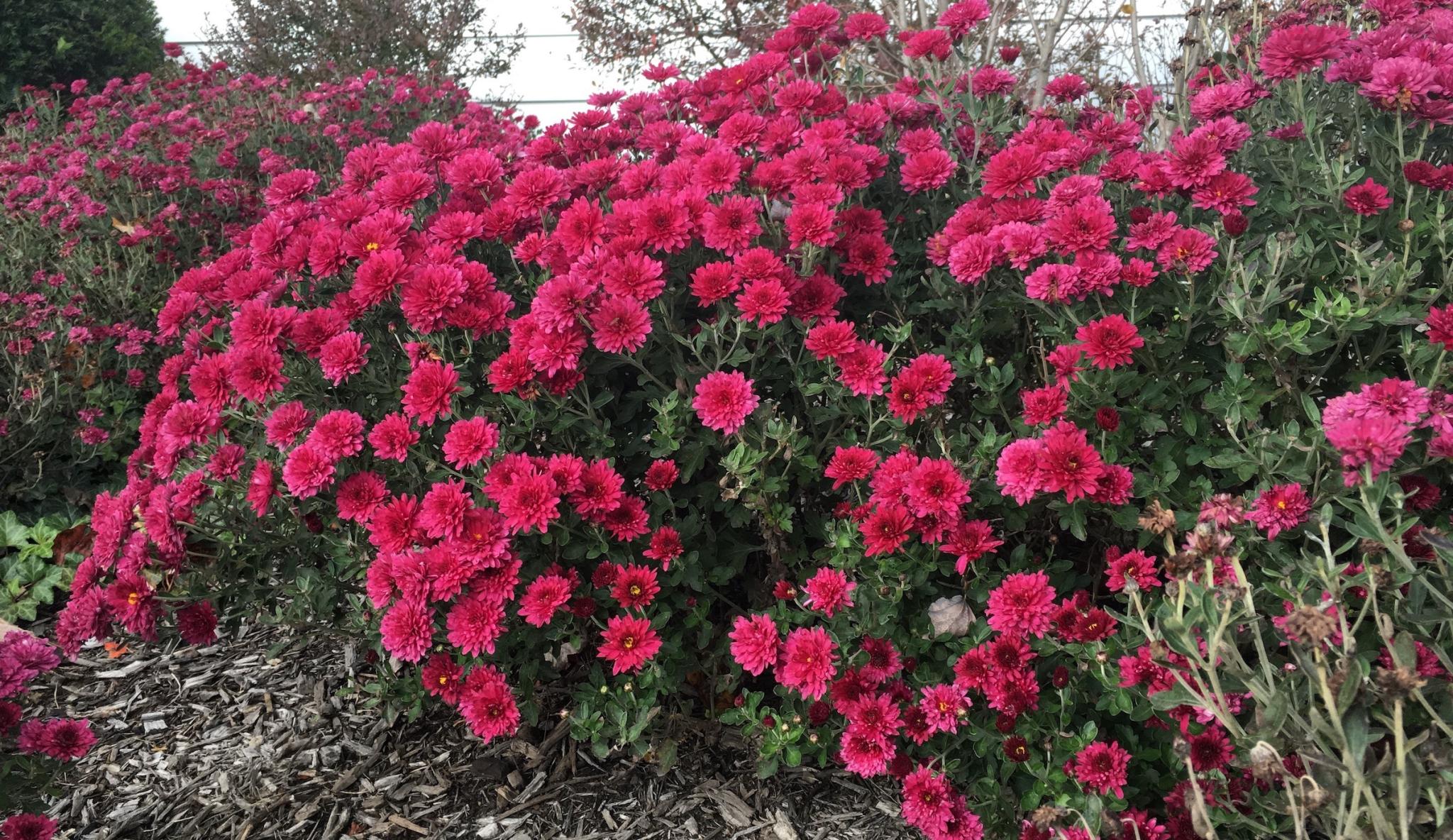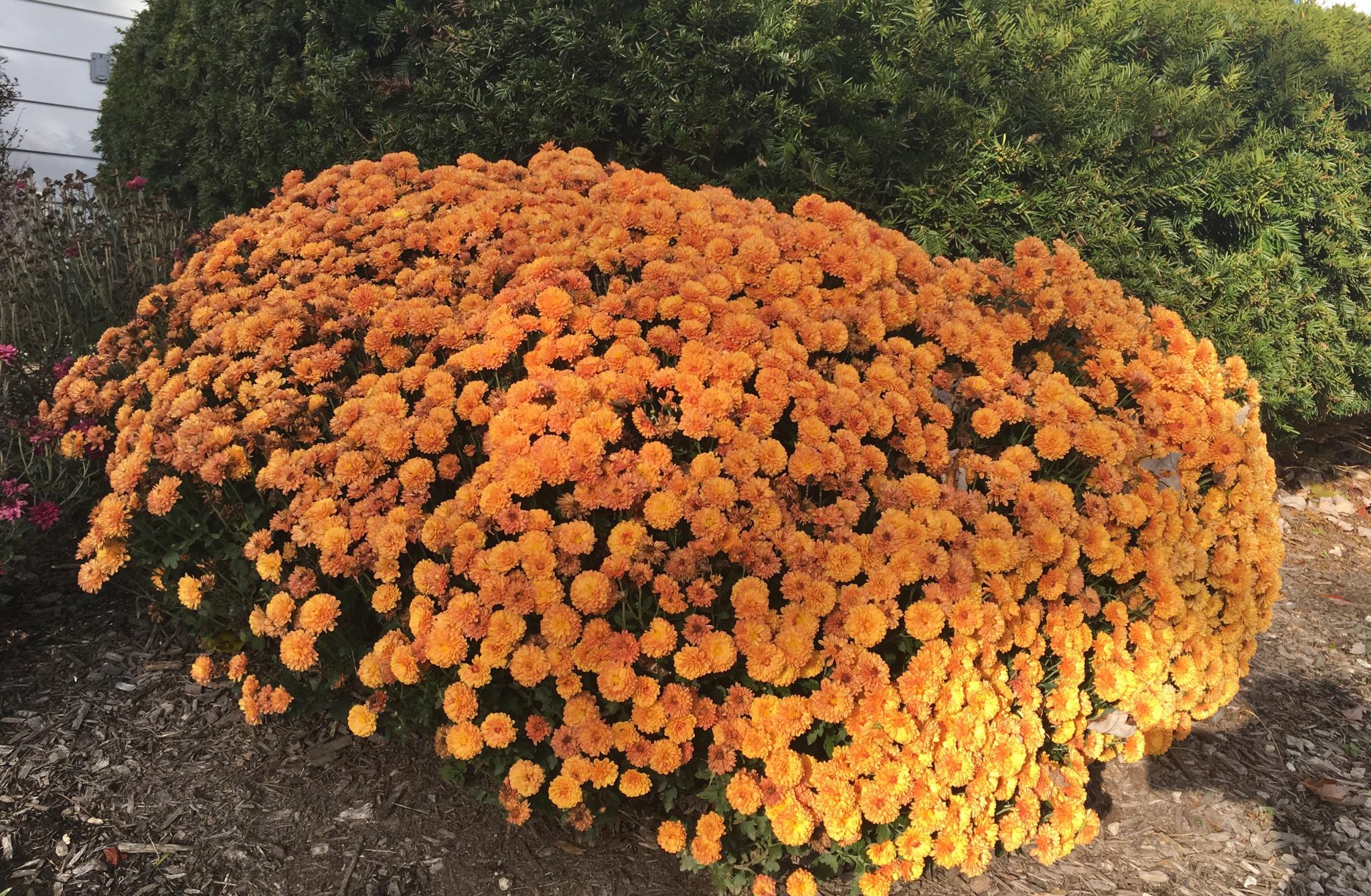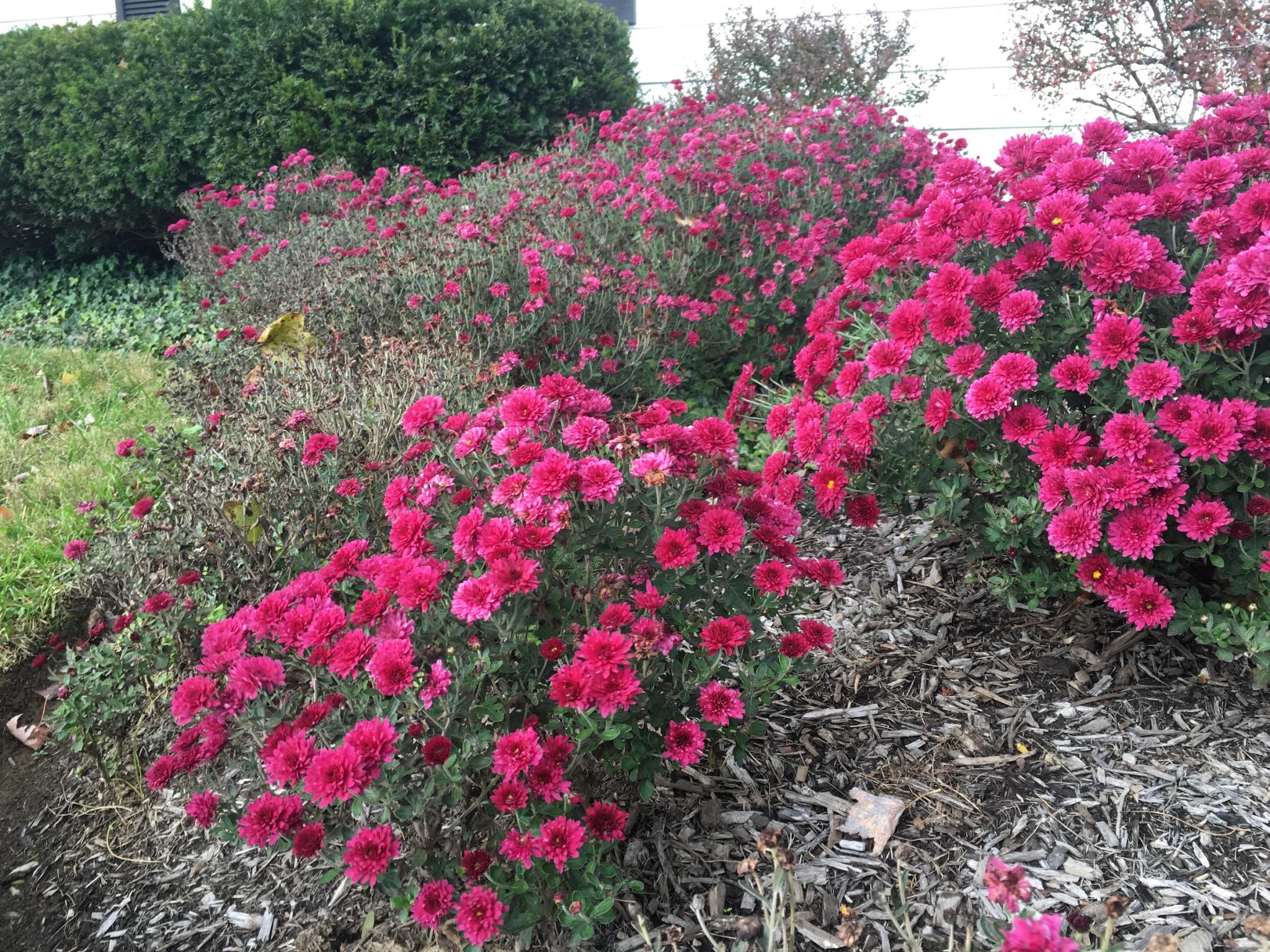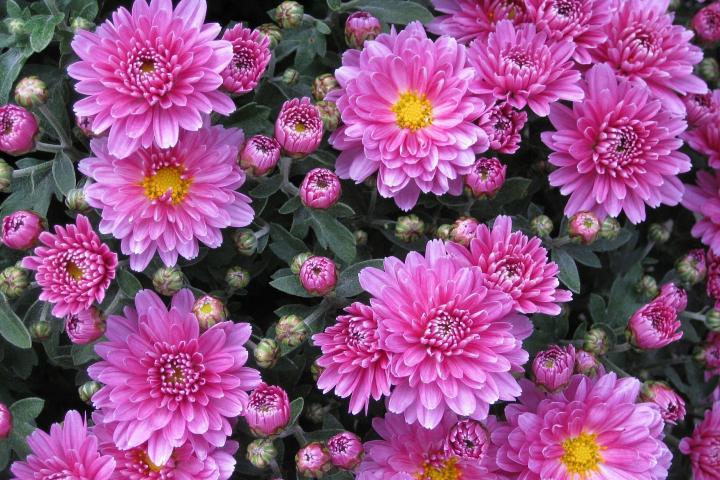
Planting, Growing, and Caring for Chrysanthemums
The Almanac Garden Planner - Use It Free for 7 Days!
Plan your 2025 garden with our award-winning Garden Planner.
Types
Mums belong to one of 13 classes based on flower form and petal shape!
- Irregular Incurve: giant blooms, e.g., ‘Bola de Oro’ (gold)
- Reflect: very large to medium blooms, e.g., ‘Pretty Polly’ (purple, with pink reverses)
- Regular Incurve: ball-shape, e.g., ‘George Couchman’ (bronze)
- Decorative: flattened, e.g., ‘Coral Charm’ (salmon)
- Intermediate Incurve: more open than other incurves, e.g., ‘St. Tropez’ (crimson, with bronze reverse)
- Pompom: balls, e.g., ‘Kevin Mandarin’ (deep orange)
- Single and Semidouble: concave/convex, e.g., ‘Domingo’ (crimson, with yellow center)
- Anemone: single, e.g., ‘Daybreak’ (apricot, with yellow center)
- Spoon: single/daisy with tipped ends, e.g., ‘Kimie’ (yellow, with green center)
- Quill: tubular florets, e.g., ‘King’s Delight’ (true pink)
- Spider: varying florets, e.g., ‘Lava’ (yellow, with red tips)
- Brush or Thistle: upright florets, e.g., ‘Wisp of Pink’ (yellow center)
- Unclassified or Exotic: irregular, e.g., ‘Lone Star’ (pure white)
Extra-hardy Mums
These will survive in frigid climates: ‘Betty Lou’ Maxi Mum, ‘Burnt Copper’, ‘Centerpiece’, Grape Glow’, ‘Lemonsota’, ‘Maroon Pride’, ‘Mellow Moon,’ ‘Minnautumn’, ‘Minnpink’, ‘Minnruby’, ‘Minnwhite’, “Minnyellow’, ‘Rose Blush’, ‘Sesqui Centennial Sun’, ‘Snowscape’.
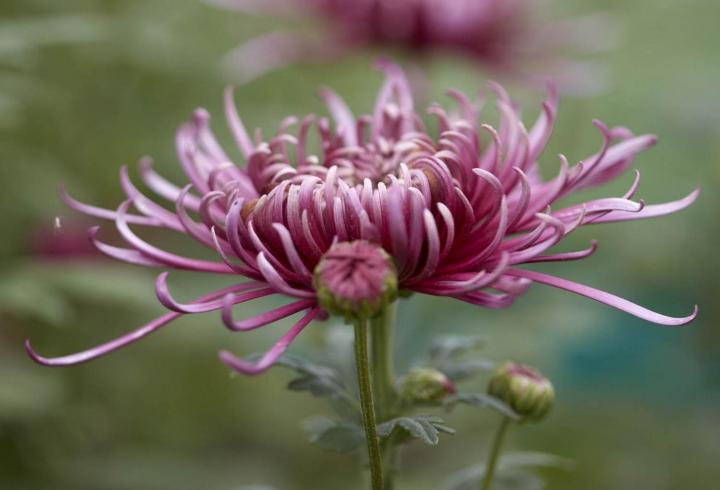
Credit: EdenGardenGr.
ADVERTISEMENT
Good content. Thanks, you. Just want to know about keeping the post or plant after Autumn season. Can you advice when and how to propagate for the next season. How to preserve planting material during cooling period i.e. after February or March in India. I will be highly obliged if share information at my email
This is a great beginners primer for the beginner grower & cultivationist; well worth keeping to refer to revisit as a reference...WELL DONE!!!
Thank you, Frank!
My plants are from fall 2022. I planted them, they started to flowered this spring and are still flowering. My question is can I relocate them now. I think I can cause I planted them from pot to ground while blooming.
When it comes to transplanting your mums from one garden area to another, it would be best to wait until after the plant has stopped blooming later in the season or wait until next spring. You will want to make sure that your mums have time to establish roots in the new location before the cooler weather sets in (depending on your location). If waiting until the spring, it is also a great time to not only move your plants, but also divide them. Dig up the plants in early spring just as new growth appears. Divide each plant into sections with a sharp knife. Each smaller plant should contain several shoots and a portion of the root system. Replant the divisions as soon as possible.
I want to plant some around my garden. During the spring my yard is very wet. We have to wear boots around our yard because of all the standing water. Our garden is at the highest point in our yard and I plan to build up the area around our garden fence to plant them. Will this work? Will they survive? The rest of the year our yard is fine, it’s just spring when everything is swampy.
Anything that you can do to provide good drainage will help chrysanthemums to survive. Some root rot diseases will spread by splashing water, so try to have your mums away from puddles if you can. Building up the soil in the area where you’d like to plant can definitely help. Or, you might plant them in containers or raised beds, to get them off any saturated ground. Improving soil drainage by mixing in lots of organic matter might help as well. Also provide good air circulation (such as not too close to other plants, plant in a sunny spot), to help dry leaves during the day and deter disease. Hope this helps!
I was given a potted mum five years ago and have kept it blooming every year by "winterizing" it. I cover it with the cut dried up flowers and stems of the plant, add some leaves, cover with chicken wire (to keep all in place) weighted down with bricks. This spring, I was able to divide the plant into three and all three did well. I'm in zone 5, and some of our winters are brutal with cold and wind. This winter is forecast to be even worse, so time will tell how my mums survive it.
Potted mums purchased in autumn will often overwinter with little effort, at least mine do. I do repot them when I bring them home, however. Most people leave them in their plastic tubs and simply dispose of them after bloom. I look forward to a few hours in the cool garage in fall, potting up the new mums - there's always a new color that catches my eye, too. Standard, inexpensive potting soil, no need for fertilizer. I only buy mums that are just starting to bloom or have only buds - obviously, they last longer. When they are done blooming and repeated nightly frosts are likely, I take them into the garage: detached, unheated. I let the greenery fade a little, then I cut them down. There is always new green hidden at the base of the plant. The article suggests leaving the greenery and giving some water overwinter - I may try that on a few as an experiment this year, but previously I have not watered or left green. In spring, around mid-April, I just set them outside, give them a drink and wait. Within 2 weeks they are greening up again. Once in a while one might not return, but usually they all do if they are a single season old. I've had many, many that return for a third year! I know this is not supposed to happen, but it does! Now, they take all summer to keep growing and get buds. Mine from last year are just starting to flower now - some need another couple weeks. They usually double in size, too. It's fun remembering the colors I have as they open. A few big pots of greenery all summer are nice to place strategically around and I also like to keep a big grouping of them all together in another area, then bring them out front as they flower. Of course this will tie up your pots for a couple years but I have plenty of pots now. I still buy new mums yearly to replace the ones that won't make after a second or third bloom, so the pots get rotated. Give it a try, even with a few, just to see what happens!
Mike, thank you for your advice! I will certainly try your method. Can you share what area of the country you are in please?


